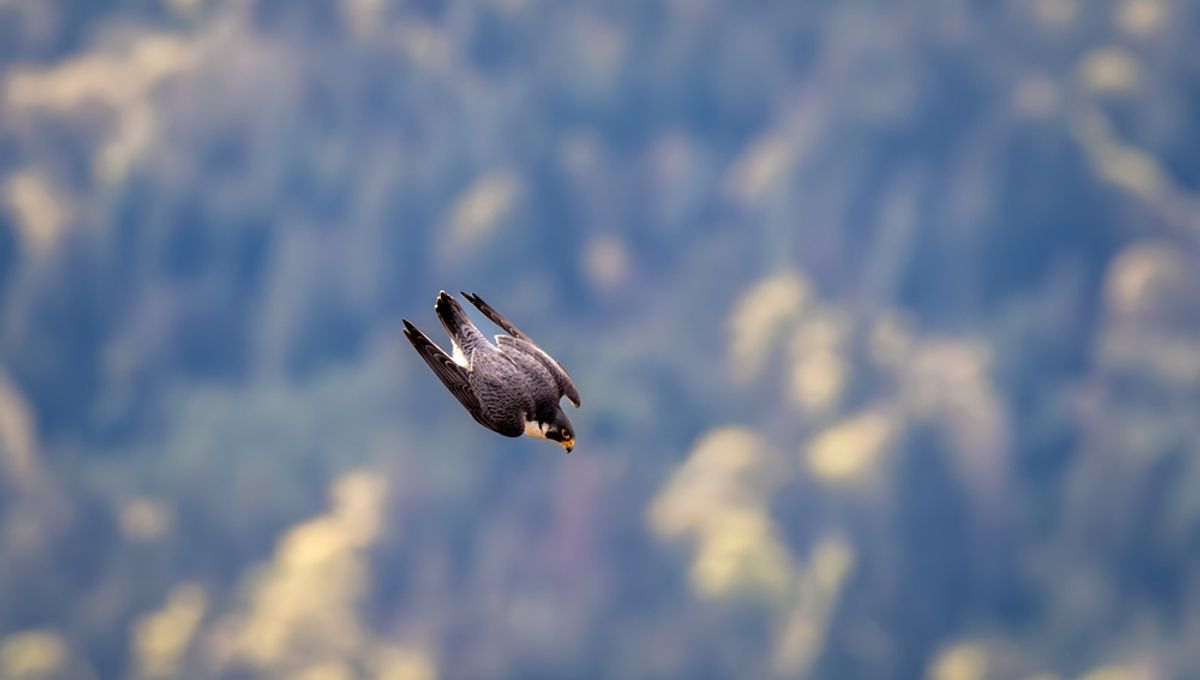
Cheetahs may hold the reputation for being the world’s fastest animal – and with a running speed of up to 120 kilometers per hour (75 miles per hour), the feline is indeed the quickest animal on land. But that pales in comparison to the impressive diving speeds of the peregrine falcon, which, according to the National Audubon Society, has been known to reach speeds of 300 kilometers (186 miles) per hour. This is the fastest they have been detected on record. Yet scientists believe they can travel even faster and reach speeds on par with a bullet train (200 miles per hour).
While this impressive feat makes it the fastest animal in the world when diving, the Peregrine falcon is quickly outpaced when flying by the Brazilian free-tailed bat, which is considered to be the fastest flying animal. This particular species of bat can achieve speeds of almost 160 km/h (100 mph). Indeed, the peregrine falcon does not even win the title of fastest flying bird – that is an honor that currently goes to the common swift.
The peregrine falcon’s record-breaking dive is an essential part of its hunting strategy. These raptors are birds of prey that “stoop” or dive in order to strike their kill mid-air. According to the National Audubon Society, peregrine falcons mostly feed on other birds. More urbanite falcons living close to cities are frequently found devouring pigeons, whereas ducks and shorebirds are often favored by those living nearer to the coast.
According to the National Park Service, the name stems from the Latin word for “foreigner” or “traveler” (peregrinator) and, living up to its name, the peregrine falcon is a global bird, inhabiting all continents except for Antarctica. There are three subspecies that can be found in North America, including the American or continental peregrine falcon, the tundra or arctic peregrine falcon, and the Peale’s peregrine falcon. The birds are typically found in mountain ranges, such as the Appalachians and Rocky Mountains.
Like many animals, the peregrine falcon has been negatively impacted by humans. The species was listed as endangered during the 20th century after pesticides including DDT triggered declines in population. Fortunately, the peregrine falcon was able to shed its endangered status thanks to efforts to reduce the use of these chemicals and a subsequent rise in bird numbers.
But this does not mean they are in the all-clear. Recent reports suggest that peregrine falcon numbers in the US are falling for the first time since the 1970s. In some areas, as many as half of nesting peregrines went missing last year. Researchers have put forward a number of theories for this trend, from pesticides to a drop in prey to the spread of Highly Pathogenic Avian Influenza (HPAI). However, the true cause remains unknown.
Source Link: Meet The World’s Fastest Animal In A Dive